100w Solar Panels Complete Guide - Renogy
100w Solar Panels Complete Guide - Renogy
Hi there.
Congratulations on finding the only article you'll ever need for information on 100W solar panels, including how to pick the best 100W solar panels.
So be sure to bookmark this page and share it with your friends if you find it useful.
That being said, in this article, we will answer most of your questions regarding 100W solar panels. We will also introduce you to a wide range of Renogy 100W solar panels suitable for any budget or purpose.
Without further ado, let's begin.
Table of contents:
100W solar panels
- Types of 100W solar panels
- How much power will a 100 watt solar panel produce?
- How many amps does a 100W 12V solar panel produce?
- What equipment can I power with a 100 watt solar panel?
- Will a 100W solar panel run a fridge?
- How many solar panels do I need?
- How much do 100-watt solar panels cost?
- Factors that impact solar efficiency
- How do I maintain solar panels?
Batteries for 100w solar panels
- Do you need a battery with a 100W panel?
- Which battery capacity do you need?
- Can a 100W solar panel charge a 100Ah battery?
- How long will a 100 watt solar panel take to charge a 12V battery?
Answers about the 100W solar panels you’re looking for
Types of 100W solar panels
There are three main types of 100W solar panels on the market:
1. Rigid 100W Monocrystalline Solar Panels
2. Rigid 100WPolycrystalline Solar Panels
3. Flexible 100W Solar Panels (Polycrystalline or Monocrystalline)
Out of the three types, rigid 100W monocrystalline panels offer the best performance and power output. Yet they are also the least affordable out of the three types.
Secondly, rigid 100W polycrystalline solar panels are slightly less powerful than monocrystalline panels, but they are also more affordable.
Lastly, flexible panels are typically less powerful than their rigid counterparts, but they are more suitable for installations on uneven surfaces.
In short, each of the three types of 100 watt solar panels has an ideal scenario where they are more appropriate than others.
That being said, here at Renogy we strive to provide top-notch products, service, and pricing, so you won't find any polycrystalline panels in our stores.
Instead, we have the very best all-weather, compact, rigid and flexible 100W monocrystalline panels at low prices. In fact, you can get an even more affordable price for your panels if you take advantage of our discounts and promotions. Click here to see solar panels we have on sale right now.
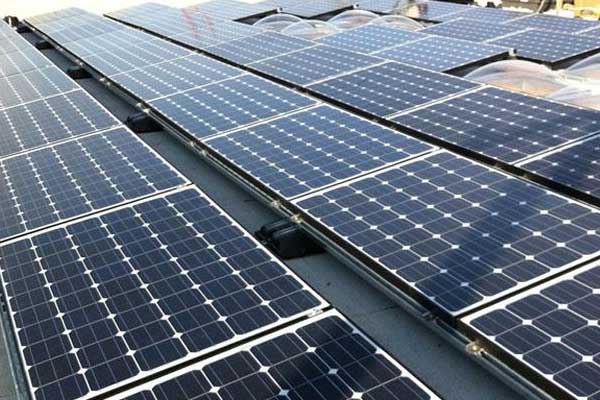
As an aside, you might wonder why we advocate for monocrystalline panels? Well, monocrystalline panels or "mono panels" for short are smaller, more efficient, and more resistant to adverse operating conditions and weather. In fact, our recent mono panels can even continue working even when they are partly shaded.
We are confident that if you buy a Renogy 100W solar panel, you won't regret it. It doesn't matter if it's a 100W flexible solar panel or its rigid cousin. we're sure to have something for you.
How much power will a 100 watt solar panel produce?
A 100 watt solar panel will generate 100Wh of energy during each peak sun hour. Depending on where you live in Australia, you will get a different amount of peak sun hours in your region.
For example, in the coastal Queensland area, encompassing Brisbane, you get 7 to 8 peak sun hours daily.
Supposewe install a renogy 100W solar panel on a Brisbane roof. To find out how much power it will produce daily, we multiply the panel’s wattage by the Brisbane peak sun hours.
Power Produced by a 100W panel = panel wattage * peak sun hours
Power Produced by a 100W panel in Brisbane = 100W * 7 hours = 700Wh
So a 100 watt solar panel in Brisbane will produce a minimum of 700Wh every day.
You can use the same formula to determine how much power a panel will produce in your state. For more information on Australian peak sun hours, check out this article.
How many amps does a 100W 12V solar panel produce?
First of all, you need to remember that the 12V rating on your solar panel is only a nominal voltage. The reality is usually different with most 12V panels outputting as much as 18V.
So any calculations we do use the nominal ratings are likely to be slightly inaccurate, but they give us an estimate to work with.
Having said that, to determine how many amps a panel produces, we use the formula below:
Amps (Current) of a Panel = Panel Wattage / Panel Voltage
Amps of a 100W 12V Panel = 100W / 12V = 8.33 A
If we were to use the actual voltage of most 12V panels, we would get a different amperage that’s closer to the true value:
Amps of a 100W 12V (18V) Panel = 100W / 18V = 5.55 A
This is how you calculate how many amps a panel produces.
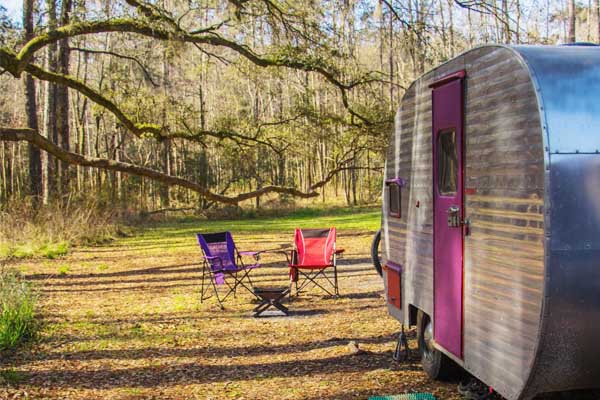
What equipment can I power with a 100 watt solar panel?
As we previously calculated, a 100W solar panel produces between 400Wh to 900Wh a day.
Any equipment you want to power with such a solar panel must have an energy consumption lower than what the panel produces. Lightweight electronics like radios, lights, wifi routers can easily run all day when powered by a 100W panel.
On the other hand, slightly bigger devices with greater energy needs, such as TVs, Decoders, Fans, etc., will likely run only for a limited period. For example, a 100W panel can power a 60 watt TV for only 6 to 15 hours. Or a 100W fan for 4 to 9 hours.
Big electricity guzzlers like microwaves, irons, and stoves can not even run on the little power from a 100W panel.
If you want to find out how long your 100 watt panel can power a device in your home, use the formula below:
Time of Use = Total Power Produced by Panel / Power Rating of Your Device
Time of Use for 60W TV = 700Wh / 60W = 11 hours 39 mins
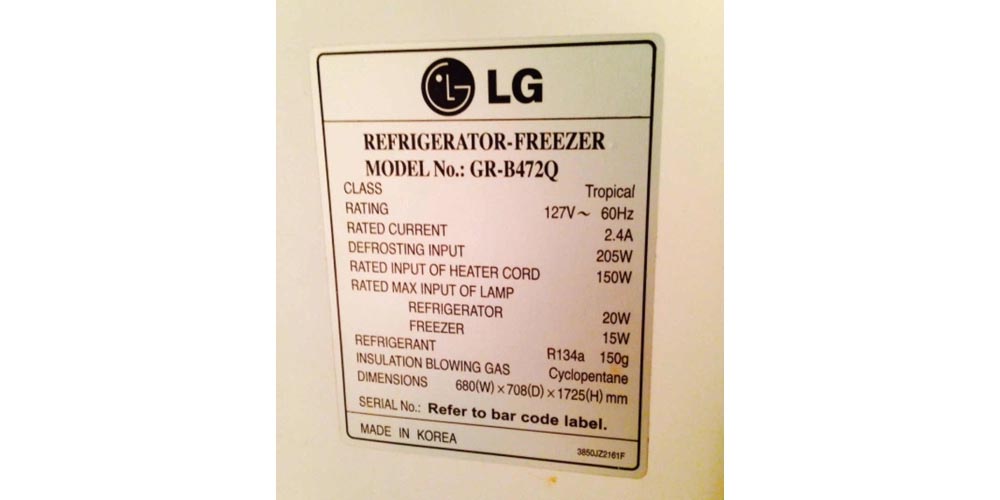
Source:diy.stackchange
Will a 100W solar panel run a fridge?
Probably not. If you are thinking of running a standard-sized fridge in your home, you won't be able to run it with a single 100W solar panel.
Depending on where you live in Australia, a single 100W solar panel will produce somewhere between 400Wh to 900Wh of energy.
In contrast, most fridges use an average of 1000Wh to 2000Wh of energy each day. So based on that, a single 100W solar panel cannot produce enough power to run a fridge.
If you really want to power a fridge using a 100W solar panel, you need several 100W panels to produce a greater power output that can satisfy the fridge’s load.
For example, suppose you get 5 (five) 100W panels with an average combined output of 2500Wh. In that case, you can run a fridge and some small appliances.
Please note that if you want to power your fridge during the night using solar power, you will need batteries for energy storage. Why? Solar panels cannot work at night, so you need somewhere energy storage for such moments. In addition to batteries, you might need an inverter that processes your panel’s DC power into refrigerator-friendly AC power.
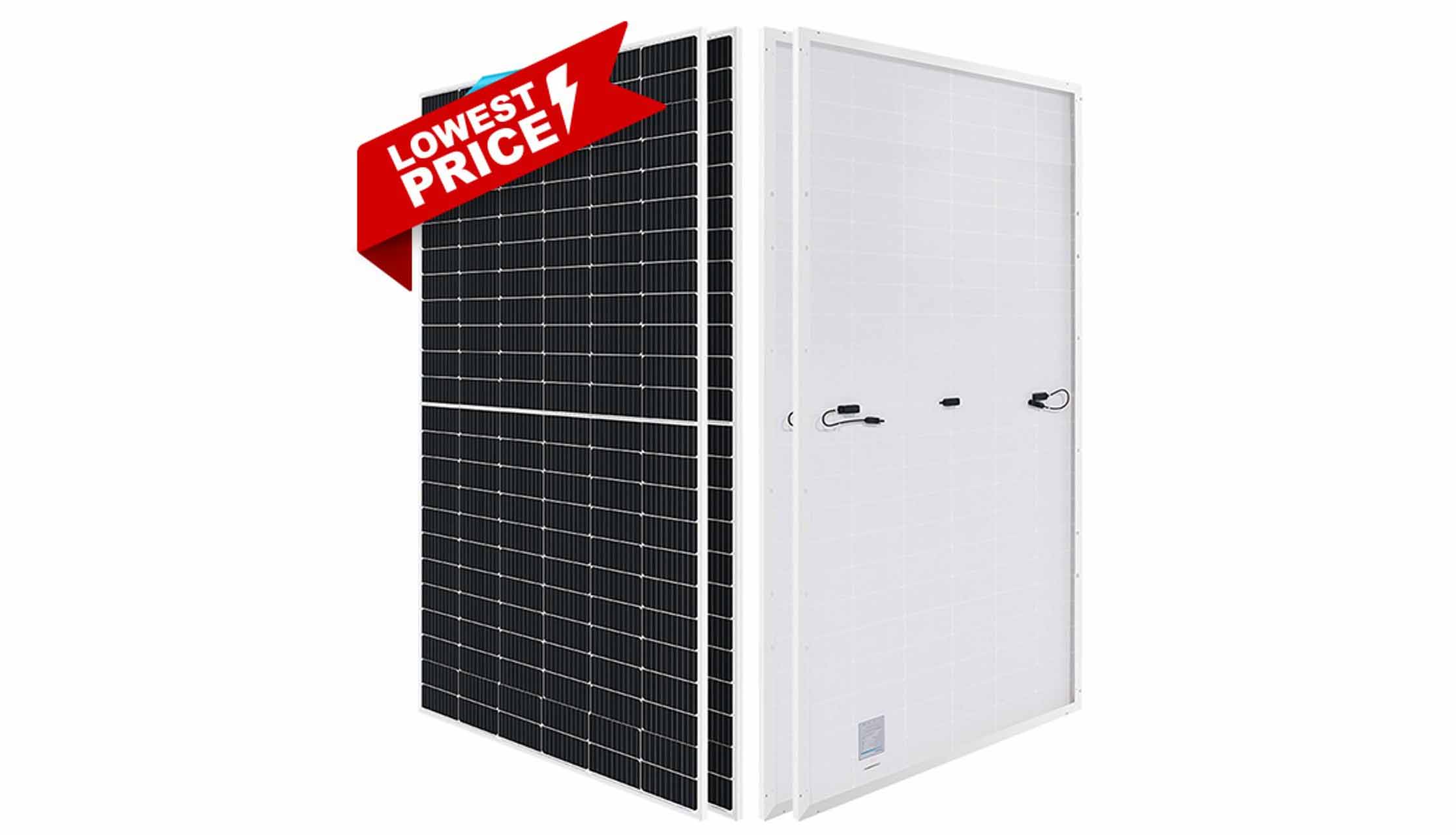
How many solar panels do I need?
Determining the number of panels you need is quite easy if you know how much energy you want to generate with your solar, your panel wattage, and peak sun hours.
You can use the formula below:
Number of Panels = Daily Solar Energy Output / (Panel Wattage * Peak Sun Hours)
Suppose we want to generate 10000Wh using solar daily. In that case, if we substitute our 100W panel and 7 peak sun hours into the above formula, we can find out how many 100W panels we need. Observe:
Number of Panels = 10000Wh / (100W * 7 hours) = 14.3 panels,
which must be rounded to 15 (fifteen) 100W panels.
According to this example, you need 15 100W panels to generate 10000Wh.
You can also use the above formula to calculate how many panels you need for your system.
How much do 100-watt solar panels cost?
The quality, type, and efficiency of 100W play a huge role in determining the final price for a panel.
Panels that are of a low quality, low efficiency, and use common production technologies are often cheaper than their more sophisticated counterparts.
On the other hand, 100W 12v solar panels of top-notch quality, high efficiency, and intricate production will always cost slightly more. But their performance more than justifies the additional cost.
Therefore, in the marketplace you will find the cost of 100W panels ranging from around AU$100 to over AU$400.
If you are looking for affordable 100W solar panels for sale, try our range of Renogy 100W monocrystalline panels with entry-level prices beginning at around AU$130.

Factors that impact solar efficiency
There are many factors that can positively or adversely affect your solar panels’ efficiency. It’s important to know these factors so you can ensure your system performs at the highest levels.
Here are 6 factors that affect solar panel efficiency:
1. Temperature: Contrary to popular belief, the higher the temperature of a solar panel, the lower its efficiency. When receiving the same amount of sunlight, solar panels in a colder environment will produce more power than panels in a warmer environment.
2. Light Intensity: Solar panels perform best when exposed to direct sunlight. They are not as efficient when exposed to indirect sunlight such as when it’s cloudy or shaded.
3. Weather Conditions: Changing weather conditions such as rain, snow, overcast skies negatively impact your panel’s efficiency.
4. Solar Panel Orientation or Tilt Angle: The angle at which solar panels are installed affects their efficiency. Depending on where you live, the best angle for your panels in Australia is between 30 and 45 degrees.
5. Cleanliness and Maintenance: Buildup of dust, grime, and fallen leaves on your panel lowers the efficiency of your panels.
6. Shade: Install your panels in a shade-free area, away from trees, other buildings, etcetera. Any kind of shade lowers efficiency by blocking sunlight from reaching your panel.
How do I maintain solar panels?
Solar panels don't need a lot of monitoring nor maintenance. In fact, by just dedicating less than an hour of your time, every 3 or 6 months, you can ensure that they continue performing optimally.
All you need to do is:
1. Wash and clean your panels if there's any build of dust or grime.
2. Clear away any leaves that may have fallen on your panels or under them.
3. Check if any animals like rodents are not burrowing under your panels.
4. Check if all cables and their connectors are still fastened securely.
5. Check your panels for any signs of damage.
6. Frequently check if the cables from your panels or battery are operating at an optimal temperature.
Batteries for 100w solar panels
Do you need a battery with a 100W panel?
It depends on your preferences.
If your property is connected to the grid, you can probably do without a battery for your 100W panel. Why? Well, if your energy provider has a scheme that supports feeding your excess power into the grid. You can lower your energy bills and use the grid to replace battery storage.
The only problem is if the grid goes down, you won’t have any backup power at night. As a result, you will be subject to any faults or changes on the energy provider’s side. Consequently, some homeowners still use batteries even if they are connected to the grid.
On the other hand, if you are not connected to the grid, you definitely need a battery to go with your 100W panel. Otherwise, without battery storage, when your solar panels don’t work at night, you will be in the dark.
In short, if you’re on-grid you might not need a battery, but you will likely want it. If you’re off-grid then you definitely need a battery with a 100W panel.
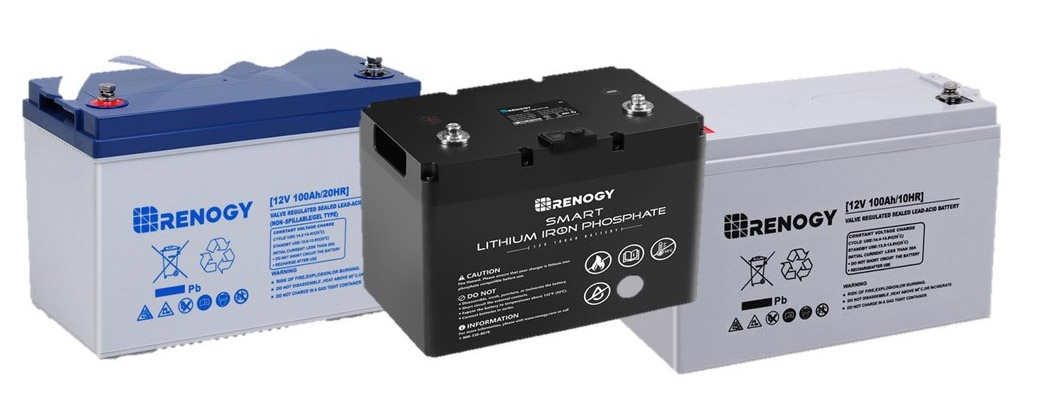
Which battery capacity do you need?
To get the most mileage out of your solar battery, you need a deep cycle battery capacity that can support your usage at a 50%-90% depth of discharge.
What does this mean? The ideal battery capacity you need should be more than your energy usage. As a result, you will not run out of the battery's charge every time.
But why does it matter? Well, the lifespan of your solar batteries decreases the deeper you discharge them. Some batteries may even become unusable after being discharged to a certain point. Therefore, if you want to preserve your batteries’ lifespan, you should discharge them as little as possible. A 50% depth of discharge is optimal for most lead acid batteries. With our Renogy lithium batteries could be discharged up to 80%.
All in all, ideally, your energy usage should be between half and 80% of your battery's capacity. You can use our online solar calculators to calculate your energy usage and battery capacity or check 2023 Solar Batteries Guide For Home Use In Australia for more details.

Can a 100W solar panel charge a 100Ah battery?
Yes, you can charge a 100Ah battery with a 100W solar panel.
The only question is how long it will take. A completely discharged 12V 100Ah battery will take approximately 2 days to charge fully. Let me show you how we got that figure.
How long will a 100 watt solar panel take to charge a 12V battery?
A 12V 100Ah battery has an energy storage capacity of approximately 1200Wh. In contrast, a 100W panel produces between 400Wh to 900Wh daily. So if our panel has an hourly output of 100Wh and gets 6 peak sun hours. Time and days taken to charge will be:
Time to charge = 1200Wh / 100Wh = 12 peak sun hours
Days to charge = 12 peak sun hours / 6 peak sun hours = 2 days.
In short, while a 100W solar panel can charge a 100Ah battery, it takes nearly 2 days to charge a completely discharged battery. Suppose we use a 12V 50Ah as our example, it would take half the time it takes to charge a 100Ah battery.
Related articles:
Portable Solar Panels - From Orange To The Outback
Solar Panel Incentives And Rebates In Australia
A Comprehensive Guide On Solar Panel Size






